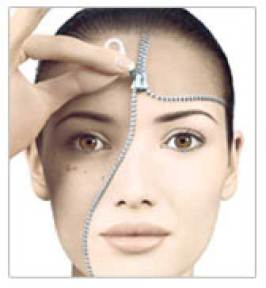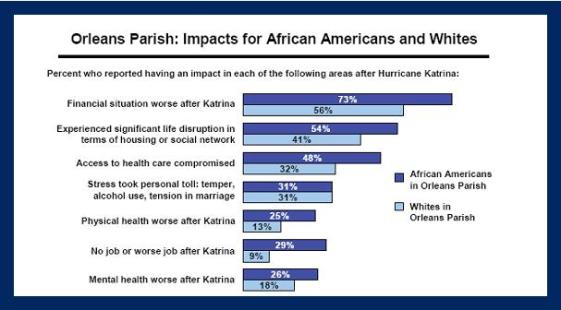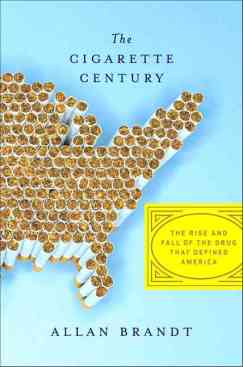Queen sang it this way:
 This (This Thing) called love
This (This Thing) called love
(Called Love)
It cries (Like a baby)
In a cradle all night
It swings (Woo Woo)
It jives (Woo Woo)
It shakes all over like a jelly fish,
I kinda like it
Crazy little thing called love
There goes my baby
She knows how to Rock n’ roll
She drives me crazy
She gives me hot and cold fever
Then she leaves me in a cool cool sweat
I gotta be cool relax, get hip
Get on my track’s
Take a back seat, hitch-hike
And take a long ride on my motor bike
Until I’m ready
Crazy little thing called love
With Valentine’s Day months behind us, it is now possible to take a situationist look at this crazy thing called love.
Have you ever been obsessed with, wild for, smitten by, hot for, or crazy about someone? What about a crush or an infatuation? Do you recall how you were unable to think of anything but that other person? How ’bout the mood swings from euphoria to despair? Do you recall feeling addicted or the way separation only amplified the longing? Do you recall the depression, frustration, and embarassment associated with an unreciprocated crush? What about the craving for union and the possessiveness?
If so, then you know first-hand something about this crazy little thing called “love.” It is sweet and bitter both – a craving we won’t let go of and that won’t release us even if we want it to. That intense romantic focus provides a sense of complete and permanent devotion (which turns out to be inaccurate in fact) – even as it generates immense pain when it is unrequited or otherwise impossible. What creates this wonderful source of pain, this ache of passion – Cupid’s hurts-so-good arrow piercing the heart?
Earlier this year, the Washington Post’s Neely Tucker attempted to shed some light on those questions in an article titled “An Affair Of the Head: They Say Love Is All About Brain Chemistry.” We have excerpted portions of the article below.
* * *
It’s all about dopamine, baby, this One Great True Love, this passionate thing we’d burn down the house and blow up the car and drive from Houston to Orlando just to taste on the tip of the tongue.
You crave it because your brain tells you to. . . .
Dopamine.
God’s little neurotransmitter. Better known by its street name, romantic love.
Also, norepinephrine. Street name, infatuation.
These chemicals are natural stimulants. You fall in love, a growing amount of research shows, and these chemicals and their cousins start pole-dancing around the neurons of your brain, hopping around the limbic system, setting off craving, obsessive thoughts, focused attention, the desire to commit possibly immoral acts with your beloved while at a stoplight in the 2100 block of K Street during lunch hour, and so on.
“Love is a drug,” says Helen Fisher, an anthropologist at Rutgers University and author of “Why We Love: The Nature and Chemistry of Romantic Love.” “The ventral tegmental area is a clump of cells that make dopamine, a natural stimulant, and sends it out to many brain regions” when one is in love. “It’s the same region affected when you feel the rush of cocaine.”
Passion! Sex! Narcotics!
Why do we suspect this isn’t going to end well?
Because these things are hard-wired not to last, all of them. Short shelf lives. The passion you fulfill is the passion you kill. The most wonderful, soaring feeling known to all mankind . . . amounts to no more than a narcotic high, a temporal state of mania.
“Being in love, having a crush on someone is wonderful . . . but our bodies can’t be in that state all the time,” says Pamela C. Regan, a professor of psychology at California State University, Los Angeles, and author of “The Mating Game: A Primer on Love, Sex and Marriage.” “Your body would fizzle out. As a species, we’d die.”
Some of these love chemicals in the brain, scientists measure by the picogram, which is a trillionth of a gram.
How fragile, this [crazy little] thing called love.
* * *
 In her most recent research, Fisher and colleagues gave 32 love-struck subjects an MRI scan while they viewed a picture of their beloved.
In her most recent research, Fisher and colleagues gave 32 love-struck subjects an MRI scan while they viewed a picture of their beloved.
Boy, did their brains light up!
There are two shrimp-size things on either side of your brain called the caudate nuclei. This is the gear that operates bodily movements and the body’s reward system: “the mind’s network for general arousal, sensations of pleasure, and the motivation to acquire rewards,” Fisher writes. And when the test subjects looked at their sweeties, these things started singing “Loosen Up My Buttons” with the Pussycat Dolls!
This, then, kicked the party over to the tiny ventral tegmental area, a little peapod-size thingy that sends dopamine bopping around your head.
This is what scientists call lots of fun.
A separate study by Italian researchers several years ago showed something else.
Serotonin, another neurotransmitter in the brain associated with obsession, depression and racing thoughts, was greatly affected — right down to the molecular level — by romance and surging dopamine. People newly in love and people with obsessive-compulsive disorder showed the same lowered levels of the “platelet 5-HT transporter.” In other words, dopamine appears to suppress serotonin, which in turn triggers obsessive-compulsive thought patterns.
You can’t stop thinking about Dave. No wonder! Dave’s hiding under a wet flap of cortex!
Your brain is officially in love, and it officially is driving you crazy.
* * *
Cupid can’t last, you know.
Oxytocin and other chemicals kick in, running around your brain to make you bond with your lover, producing a mellower, more sustainable relationship.
* * *
Dopamine leaves the scene of the affair, now running off into the nucleus accumbens, the insular cortex, the lateral orbitofrontal cortex, research by Fisher and others shows. Jilted lovers’ brains now light up in these areas when they look at pictures of their former flames — this brain matter is associated with taking big risks, addiction, physical pain and obsessive-compulsive disorders. This is why, researchers theorize, people become obsessed with lost love, and are driven, in extreme cases, to stalking, suicide, homicide, rubber tubing.
Regan, the California researcher, notes that such cases are rare, and may have more to do with existing mental issues than simple unrequited love. Still, she says, passion is destined to end . . . . Given this, she wonders if “we do our self a disservice by glorifying passionate love so much.”
“The search for eternal passion is very misguided,” she says. “It’s the search for the perfect high that keeps people discarding relationships right and left . You don’t feel the same way you did; people want to break up, instead of seeing it as normal.”
And so, alas. Even neurologists, to go with Shakespeare’s priest, now tell us passion is true love’s fool’s gold, a flamboyant dead end on the evolutionary chain of primate happiness.
The only problem with this insight is that no one pays it any mind. Doomed passion may not make us right, and it may not even make us very happy.
It only makes us human. It only makes us who we are.
* * *
Understanding something about what leads to our romantic love, unfortunately, does little to protect us from Cupid’s overwhelming power. Good luck lovers. Remember, you “gotta be cool . . . relax.”
For the complete article, click here. To watch a lengthy but fascinating lecture by Professor Fisher on the “Drive to Love,” click here. A shorter talk by Professor Fisher, providing an overview of her research on romantic love can be viewed in the video below:
P.S. Ann Bartow at Feminist Law Professors Blog makes an excellent criticism of this post, specifically with respect to the inclusion of the images and cartoon video, here. She asks: “how can the clip of a ‘Pepe Le Pew’ cartoon at the end of this post represent anything except extremely coercive, unwanted sexual contact?” That seems right to us, so we’ve removed the video. We’re grateful to be reminded of what should have been obvious, but we regret that it was even necessary.
 Last month, we wrote about the unhappiness and unhealthiness associated with commuting by car. Today we bring you a more positive take on the situation of driving: how cars facilitate family discussions. Alison Roberts of the Modesto Bee has the story, and we excerpt portions of it below.
Last month, we wrote about the unhappiness and unhealthiness associated with commuting by car. Today we bring you a more positive take on the situation of driving: how cars facilitate family discussions. Alison Roberts of the Modesto Bee has the story, and we excerpt portions of it below.
 Driving in the car is strangely conducive to tackling tough topics. Staring out the front window, not having to look each other in the eye, can make it easier — for kids and parents alike. Don’t be surprised if kids ask questions about the facts of life in the car, when you can’t see them blushing.
Driving in the car is strangely conducive to tackling tough topics. Staring out the front window, not having to look each other in the eye, can make it easier — for kids and parents alike. Don’t be surprised if kids ask questions about the facts of life in the car, when you can’t see them blushing.



















 For Celtics fans, last week was a lousy week. On Tuesday night, the NBA conducted its draft lottery, and the Celtics wound up with the
For Celtics fans, last week was a lousy week. On Tuesday night, the NBA conducted its draft lottery, and the Celtics wound up with the 
 help to bring Celtic fans out of the doldrums — as much as it brings Blazer fans back to earth. There are many interior situational features that lead us to adjust far more quickly than we anticipate and to countenance outcomes that might seem unfair or unjust. Situationist contributor
help to bring Celtic fans out of the doldrums — as much as it brings Blazer fans back to earth. There are many interior situational features that lead us to adjust far more quickly than we anticipate and to countenance outcomes that might seem unfair or unjust. Situationist contributor  or a lover will certainly bring sadness. But none of these events will affect us as much as we tend to imagine. Because of this impact bias, “common events typically influence people’s subjective well-being for little more than a few months, and even uncommon events — such as losing a child in a car accident, getting cancer, becoming paralyzed, or being sent to a concentration camp — seem to have less impact on long-term
or a lover will certainly bring sadness. But none of these events will affect us as much as we tend to imagine. Because of this impact bias, “common events typically influence people’s subjective well-being for little more than a few months, and even uncommon events — such as losing a child in a car accident, getting cancer, becoming paralyzed, or being sent to a concentration camp — seem to have less impact on long-term 



 Kyung M. Song of the Seattle Times has an
Kyung M. Song of the Seattle Times has an 



 But after the top 24 are selected, the judges’ roles become interesting.
But after the top 24 are selected, the judges’ roles become interesting.



 red help, despite his obvious difficulty moving his right leg, which was partially paralyzed due to the stroke.
red help, despite his obvious difficulty moving his right leg, which was partially paralyzed due to the stroke. Reviewing the records of such experiments going back to the mid-1980s, he says 80 percent of winning students used to give some of the chips that they won to the losers. However, after the late 1980s, the percentage suddenly dropped to the 40 percent level.
Reviewing the records of such experiments going back to the mid-1980s, he says 80 percent of winning students used to give some of the chips that they won to the losers. However, after the late 1980s, the percentage suddenly dropped to the 40 percent level.



 We recently published a post entitled “
We recently published a post entitled “ Dunn. “And by trying to be more pleasant, we end up actually feeling better – but we tend to overlook this benefit.”
Dunn. “And by trying to be more pleasant, we end up actually feeling better – but we tend to overlook this benefit.” partners as though they had never met, and found that the participants’ sense of well-being rose significantly.
partners as though they had never met, and found that the participants’ sense of well-being rose significantly.















 Richard Wiseman
Richard Wiseman views: they returned about 70 per cent of the envelopes for the Medical Research Associates, compared with 25 per cent for either of the Party Friends. The technique was not without problems – such as helpful passers-by frequently spotting an envelope being dropped and handing it back to the researcher – so Milgram experimented with different methods. Once he hired a light aircraft to drop envelopes over Worcester, Massachusetts. Unfortunately, many of the envelopes ended up on rooftops, and others put the plane in danger when they were swept into the ailerons of its wings. Despite such setbacks, the envelope-dropping method has stood the test of time and is still employed by social psychologists to ascertain public opinion. Recent drops have examined attitudes to abortion, President Clinton’s impeachment and Arab-Israeli relations. In 1999, school student Lucas Hanft
views: they returned about 70 per cent of the envelopes for the Medical Research Associates, compared with 25 per cent for either of the Party Friends. The technique was not without problems – such as helpful passers-by frequently spotting an envelope being dropped and handing it back to the researcher – so Milgram experimented with different methods. Once he hired a light aircraft to drop envelopes over Worcester, Massachusetts. Unfortunately, many of the envelopes ended up on rooftops, and others put the plane in danger when they were swept into the ailerons of its wings. Despite such setbacks, the envelope-dropping method has stood the test of time and is still employed by social psychologists to ascertain public opinion. Recent drops have examined attitudes to abortion, President Clinton’s impeachment and Arab-Israeli relations. In 1999, school student Lucas Hanft  Focusing on the body rather than the mind,
Focusing on the body rather than the mind, 


















